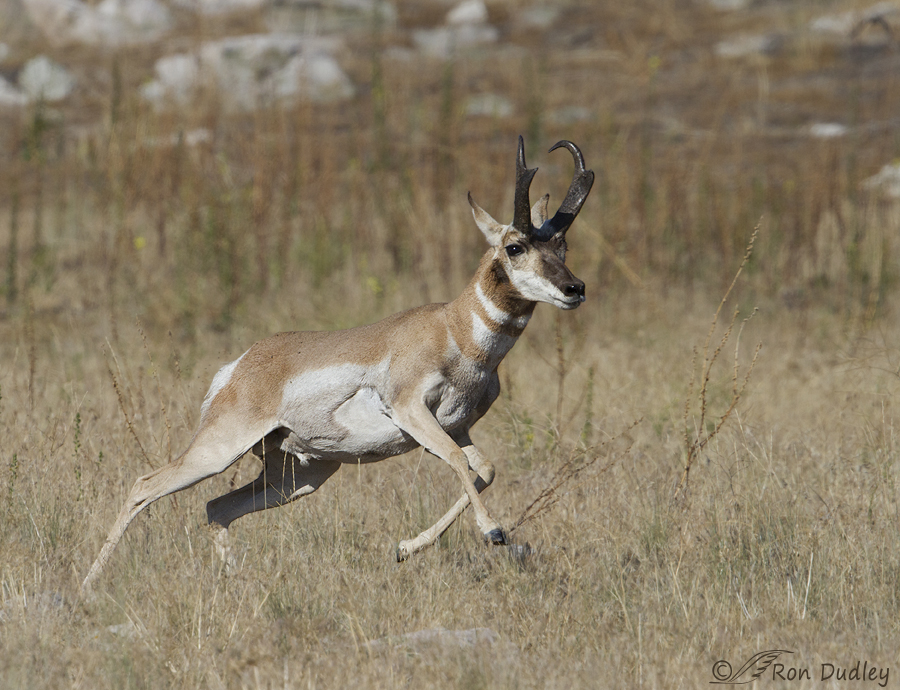Tag: running
Lickety-split Chukar
We haven’t seen many Chukars recently but yesterday we found a small covey feeding at the base of several rabbitbrush on the north end of Antelope Island. 1/3200, f/6.3, ISO 500, 500 f/4, 1.4 tc, natural light Most of them were pretty skittish but the sentry bird was standing watch on top of a snow-covered boulder as the rest of the birds slowly wandered away. The sentry posed for us for several minutes. 1/3200, f/6.3, ISO 500, 500 f/4, 1.4 tc, natural light It called out to the rest of the flock twice. 1/2500, f/6.3, ISO 500, 500 f/4, 1.4 tc, natural light Chukars are often reluctant to fly and prefer to scurry on the ground to safety. In an instant the bird accelerated up the rock… 1/2500, f/6.3, ISO 500, 500 f/4, 1.4 tc, natural light and down the other side. It was really moving. 1/3200, f/6.3, ISO 500, 500 f/4, 1.4 tc, natural light In this last decent shot I got in the series, the bird appears to be sledding on top of the snow as much as it is running through it. I really enjoy photographing Chukars in the snow this time of year. For much of the fall and early winter these birds are pretty scruffy looking but now their plumage appears bright and fresh again. Ron
The Trouble With Harems
Mia and I spent most of this week on a camping/photography trip to Flaming Gorge, Utah and we had some wonderful photographic opportunities with pronghorns. We camped on an isolated peninsula and it happened that a buck pronghorn was using the topography of the peninsula to help him keep control of his very large harem of females. The herd consisted of the lone buck and many females – both adults and juveniles. The male was in full rut and frantic to keep his does together and prevent several other males from running off with them. Does have varying mating strategies. Some does, called “sampling” females, will visit several males during the breeding season if allowed to do so. Others, referred to as “inciting females”, behave as sampling females until they come into estrus when they move off from the males which incites fights and aggressive competition between the males. These females always immediately mate with the winning male. Some females employ a third strategy where they join a single male and remain with him throughout estrus – these does are called “quiet” females. Canon 7D, 1/800, f/5.6, ISO 640, 500 f/4, 1.4 tc This poor buck was trying to control at least 28 females and was struggling mightily to do so. One evening we were at the bottom of a string of small hills just as the sun was setting (thus the warm, golden light in these photos). The buck and his females were strung out on the crest of several of the hills and one of the does was giving him a hard time by…
Lickety-split Chukar
We haven’t seen many Chukars recently but yesterday we found a small covey feeding at the base of several rabbitbrush on the north end of Antelope Island. 1/3200, f/6.3, ISO 500, 500 f/4, 1.4 tc, natural light Most of them were pretty skittish but the sentry bird was standing watch on top of a snow-covered boulder as the rest of the birds slowly wandered away. The sentry posed for us for several minutes. 1/3200, f/6.3, ISO 500, 500 f/4, 1.4 tc, natural light It called out to the rest of the flock twice. 1/2500, f/6.3, ISO 500, 500 f/4, 1.4 tc, natural light Chukars are often reluctant to fly and prefer to scurry on the ground to safety. In an instant the bird accelerated up the rock… 1/2500, f/6.3, ISO 500, 500 f/4, 1.4 tc, natural light and down the other side. It was really moving. 1/3200, f/6.3, ISO 500, 500 f/4, 1.4 tc, natural light In this last decent shot I got in the series, the bird appears to be sledding on top of the snow as much as it is running through it. I really enjoy photographing Chukars in the snow this time of year. For much of the fall and early winter these birds are pretty scruffy looking but now their plumage appears bright and fresh again. Ron
The Trouble With Harems
Mia and I spent most of this week on a camping/photography trip to Flaming Gorge, Utah and we had some wonderful photographic opportunities with pronghorns. We camped on an isolated peninsula and it happened that a buck pronghorn was using the topography of the peninsula to help him keep control of his very large harem of females. The herd consisted of the lone buck and many females – both adults and juveniles. The male was in full rut and frantic to keep his does together and prevent several other males from running off with them. Does have varying mating strategies. Some does, called “sampling” females, will visit several males during the breeding season if allowed to do so. Others, referred to as “inciting females”, behave as sampling females until they come into estrus when they move off from the males which incites fights and aggressive competition between the males. These females always immediately mate with the winning male. Some females employ a third strategy where they join a single male and remain with him throughout estrus – these does are called “quiet” females. Canon 7D, 1/800, f/5.6, ISO 640, 500 f/4, 1.4 tc This poor buck was trying to control at least 28 females and was struggling mightily to do so. One evening we were at the bottom of a string of small hills just as the sun was setting (thus the warm, golden light in these photos). The buck and his females were strung out on the crest of several of the hills and one of the does was giving him a hard time by…


